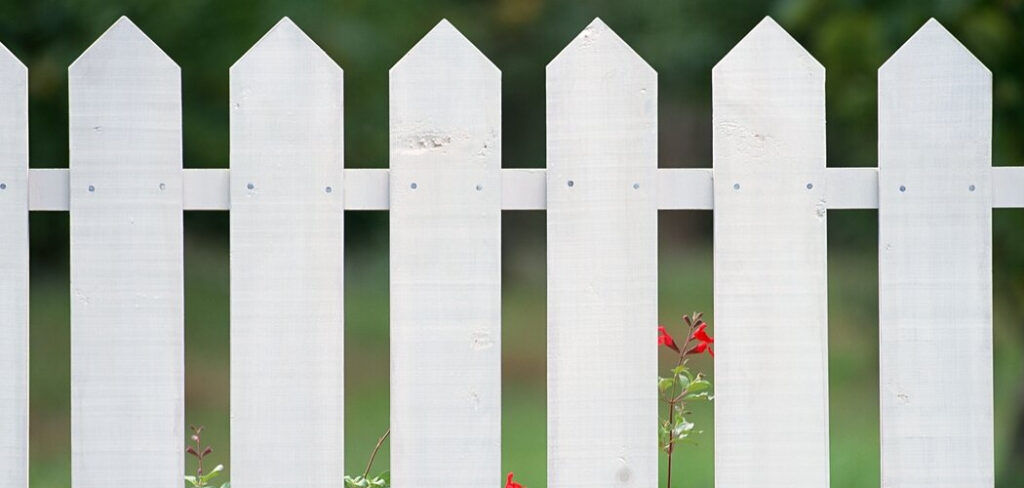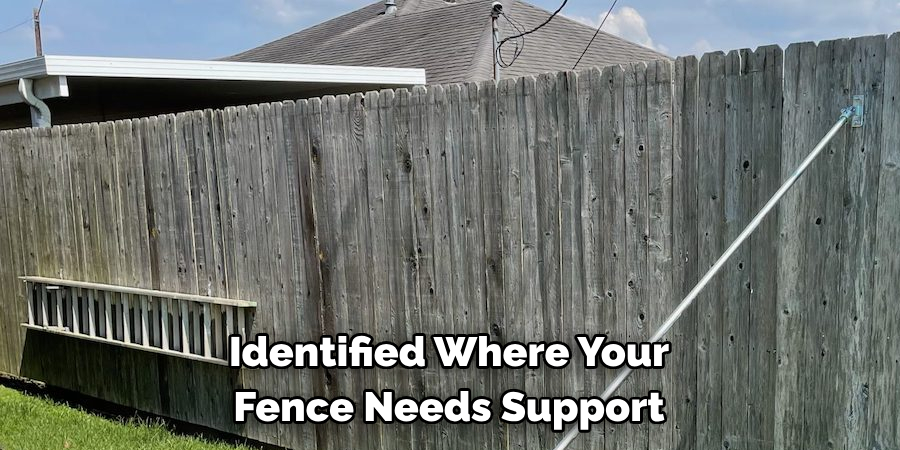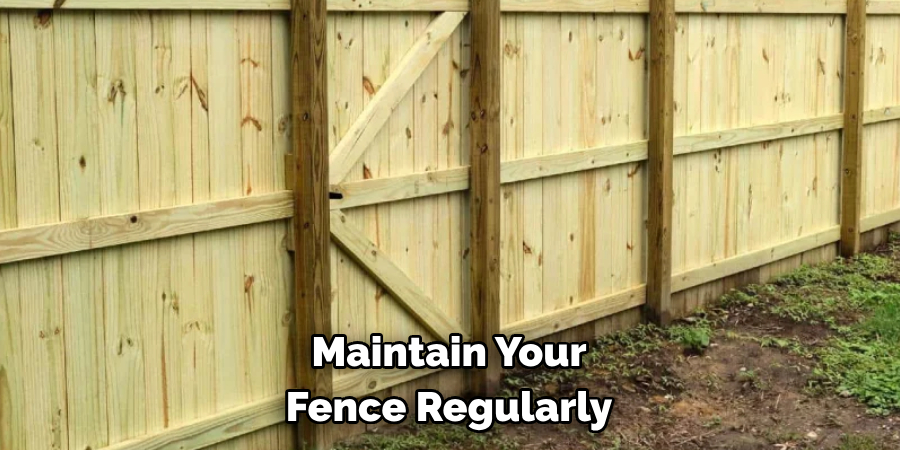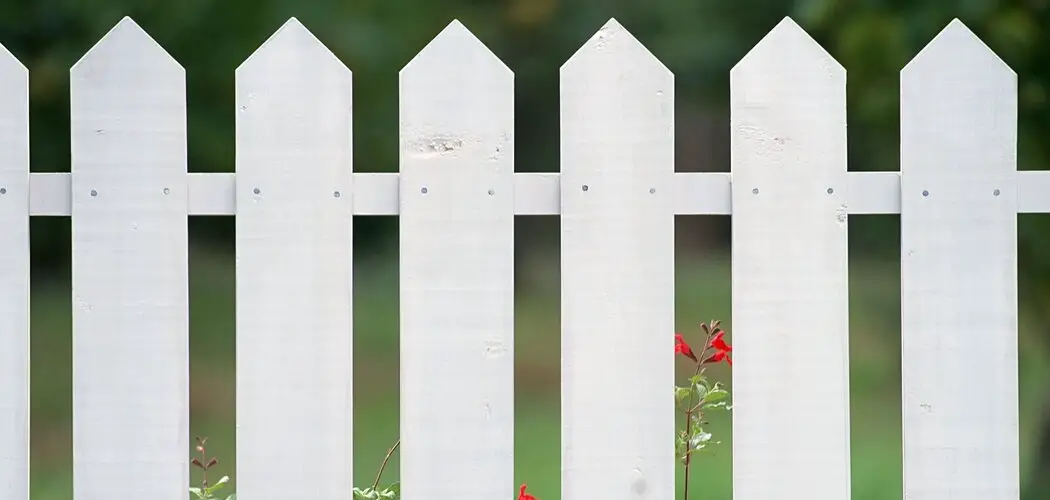Are you tired of your fence constantly being damaged by strong winds? Do you want to protect your fence and ensure its longevity? Bracing a fence against the wind is an important step in ensuring that it can withstand harsh weather conditions. This guide will discuss how to brace a fence against wind.
Windy conditions can wreak havoc on fences, causing them to buckle and collapse. If you have a fence in your yard, it’s important to take the time to properly brace it against the wind to prevent this damage from occurring. Fortunately, bracing a fence is not an overly complicated process, and there are several methods you can use depending on the size of your fence and other factors.

In this blog post, we’ll explore exactly how you should go about bracing your fence against wind – so read on for more information!
What Will You Need?
Before you begin bracing your fence, it’s important to gather all the necessary tools and materials. Here’s what you’ll need:
- Braces (metal or wooden)
- Fence posts
- Concrete mix
- Shovel
- Level
- Hammer
- Nails/screws
Once you have everything you need, it’s time to get started!
10 Easy Steps on How to Brace a Fence Against Wind
Step 1: Assess Your Fence
The first step in bracing your fence is to assess its current condition. Look for weak points, loose posts, and any areas more vulnerable to wind damage. This will help you determine where you need to focus your bracing efforts.
Step 2: Dig the Post Holes
Once you’ve identified where your fence needs support, begin by digging holes for the new posts. These should be approximately 2 feet deep and 10 inches in diameter. Be sure to space the holes evenly and in line with your current fence posts to ensure stability.

Step 3: Install the Bracing Posts
After digging the holes, installing the new bracing posts is time. Place the post in the hole and use a level to ensure it’s straight. Then, fill the hole with your concrete mix and allow it to set. This will create a sturdy base for your bracing post. Ensure the post is tall enough to reach the top rail of your fence for optimal support against wind.
Step 4: Attach the Braces
Once the concrete has set and your bracing posts are secure, it’s time to attach the braces. If you’re using wooden braces, cut them to the length that spans the distance between the original fence post and the new bracing post. Then, attach one end of the brace to the original fence post about two-thirds of the way up from the ground. The other end should be attached to the base of the new bracing post. If you’re using metal braces, simply attach them according to the manufacturer’s instructions. This cross-bracing technique will significantly strengthen your fence, helping it resist strong wind forces.
Step 5: Secure the Braces
After attaching the braces, ensure they are firmly secured. Using wooden braces, use nails or screws to secure them in place. For metal braces, use the appropriate fasteners as instructed by the manufacturer. Make sure to check that the braces are tight and secure. This will ensure that they provide maximum support and stability to your fence against strong winds.
Step 6: Repeat the Process
Next, repeat the process of installing bracing posts and attaching braces for your fence’s weak sections. Make sure each bracing post is secured with concrete, and each brace is tightly fastened to both the original and bracing post. It’s important to provide ample support for your fence to withstand high winds effectively.
Step 7: Check Your Work
After you’ve finished installing all the braces, take some time to check your work. Ensure that all the braces and bracing posts are secure and that there are no loose parts. Shake your fence lightly to test its stability and make adjustments as necessary.
Step 8: Maintenance
Maintain your fence regularly to ensure it continues to withstand wind. This includes checking the braces and posts frequently, especially after a storm or high winds, to ensure they are still secure. If necessary, tighten any loose fasteners and replace any damaged parts.

Step 9: Consider Windbreaks
Consider installing windbreaks such as tall shrubs or trees near your fence as an additional measure. These natural barriers can reduce the force of the wind hitting your fence, offering another level of protection. Be careful not to plant trees or shrubs too close to your fence, as their roots can cause damage over time.
Step 10: Seek Professional Advice
It might be best to seek professional advice if you’re unsure about any step in this process or if your fence continues to struggle against strong winds despite your efforts. A professional can assess your fence and its environment and provide expert guidance on how to brace it against the wind. Remember, it’s always better to be safe than sorry when protecting your fence.
By following these steps and regularly maintaining your fence, you can effectively brace it against wind and extend its lifespan.
5 Additional Tips and Tricks
- Choose the Right Materials: Opt for robust, weather-resistant materials like treated wood, vinyl, or metal. These elements are capable of withstanding the forceful impact of strong winds.
- Keep Your Fence Low: The taller your fence, the more likely it is to be affected by strong winds. Keeping your fence low can reduce its exposure and make it less susceptible to damage.
- Create Openings in Your Fence: Creating openings or gaps in your fence allows wind to pass through instead of building up pressure against it. Consider installing picket fencing, which is less solid and can reduce the impact of wind.
- Use Reinforcements: Adding fence posts or a trellis can provide additional support to the fence, making it more resistant to the wind.
- Professional Installation: If you’re not confident installing or reinforcing the fence, seek professional help. Experts have the knowledge and tools to ensure the fence is braced against wind effectively.
With these additional tips and tricks, you can ensure that your fence is properly braced against the wind.

5 Things You Should Avoid
- Avoid Thin Materials: Thin fence materials such as bamboo or plastic mesh might seem attractive due to their low cost, but they can easily break or warp under the pressure of strong winds. Always opt for sturdy, durable materials.
- Don’t Overestimate Your Skills: Fencing is a technical task. If you need more clarification about your ability to brace a fence properly against the wind, hiring a professional is better than risking a poorly installed fence.
- Avoid Solid Fence Panels: Solid fences act like a sail in strong winds, capturing the wind’s force rather than allowing it to pass through. This can make the fence more susceptible to damage.
- Never Use Rotten Posts: Rotten or damaged posts won’t support your fence needs in windy conditions. Always make sure your posts are in good condition before installing.
- Don’t Ignore Regular Maintenance: To ensure your fence remains braced against the wind, regular check-ups and maintenance are crucial. Neglecting this can lead to unnoticed deterioration, causing unexpected damage during a windstorm.
With these tips in mind, you can avoid common mistakes and ensure your fence remains stable and strong even in the face of high winds.
Which Wind Direction is Strongest?
When bracing your fence against the wind, the direction of the wind is a crucial factor to consider. Generally, winds coming from the west and southwest tend to be strongest in most areas. These winds can cause significant damage to fences, especially if they are not properly braced. However, it’s essential to note that winds can change direction during a storm, so it’s best to brace your fence against all wind directions to ensure its stability.
Additionally, it’s crucial to research the typical wind patterns in your specific location. For example, if you live in a coastal area, you may experience strong winds from the east or northeast due to prevailing ocean currents and weather patterns.

Knowing the strongest wind directions in your area can help you determine the best positioning and bracing methods for your fence. It’s always better to be prepared for all possibilities rather than risk potential damage.
Conclusion
How to brace a fence against wind may seem like a daunting task, but with the right materials and easy-to-follow steps, this can become something that soon seems like second nature. You’ll be amazed by how well a fence stands up to wind forces when properly braced!
Plus, you won’t have to worry about costly repairs due to snapping boards or other issues caused by violent winds. Whether you’re bracing only a few posts or an entire line of fencing, remember these tips and tricks: use the very best materials plus lag screws and posts connected to an anchor plate for added stability; use diagonal braces for extra reinforcement; account for additional lumber if building tall fences; and don’t forget about the power of concrete footings when installing in soft soil zones.
With these instructions, anyone can learn how to brace a fence effectively against even the strongest winds.
About
Outdoor Fixes is a distinguished figure in the world of Diy design, with a decade of expertise creating innovative and sustainable Diy solutions.
His professional focus lies in merging traditional craftsmanship with modern manufacturing techniques,
fostering designs that are both practical and environmentally conscious. As the author of diy,
outdoorfixes delves into the art and science of outdoorfixes-making, inspiring artisans and industry professionals alike.
Education RMIT University
(Melbourne, Australia) Associate Degree in Design (Outdoor Fixes) Focus on sustainable design, industry-driven projects,
and practical craftsmanship. Gained hands-on experience with traditional and digital manufacturing tools, such as CAD and CNC software.
Nottingham Trent University
(United Kingdom) Bachelor’s in outdoorfixes.com and Product Design (Honors) Specialized in product design with a focus on blending creativity with production
techniques. Participated in industry projects, working with companies like John Lewis and Vitsoe to gain real-world insights.
Publications and Impact
In diy, Outdoor Fixes his insights on indoor design processes, materials, and strategies for efficient production.
His writing bridges the gap between artisan knowledge and modern industry needs, making it a must-read for both budding designers and seasoned professionals.

